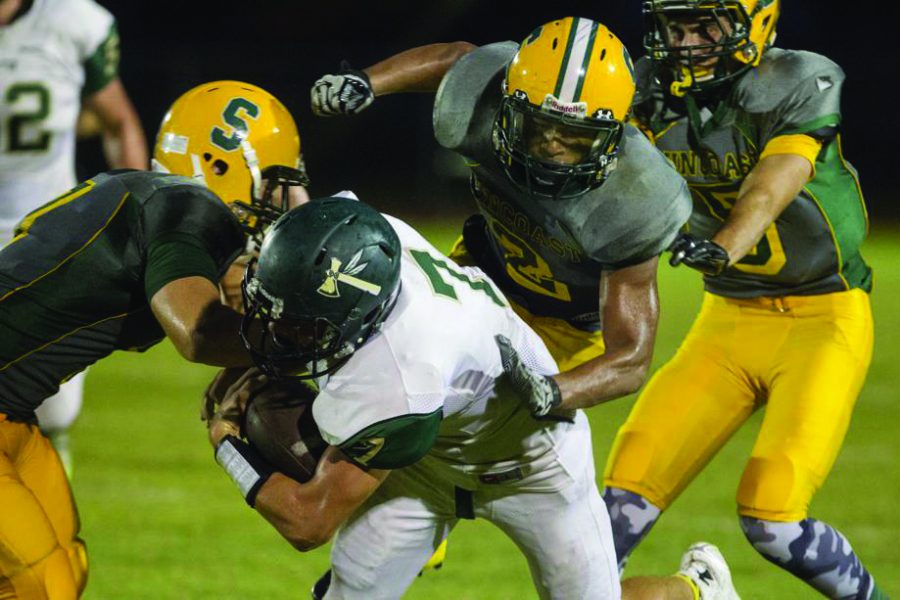CONCUSSION DANGERS
There is a high risk of concussions in high school sports.
November 6, 2017
Anyone who plays a sport bears the risk of getting injured. One of the most common types of sport related injuries are concussions, which are usual in high school athletics.
A concussion is a state of temporary unconsciousness caused by a blow to the head. Sports involving very hard and physical activity have the greatest risk of causing concussions. Concussion injuries vary based on the force of the impact on the individual. A concussion can last for hours, days, weeks, or even months depending on the level of injury,and an individual does not have to lose consciousness to have a concussion, though. Following a blow to the head, complaints of blurry vision, headaches, dizziness, or fatigue can indicate a possible concussion. Simple questions such as, “what is your name,” “do you know where you are,” and “do you know what day it is” can be used to assess the mental state of the injured individual (kidshealth.org). If the individual is having trouble speaking or taking a long time to respond, the person most likely has a concussion and should seek help from a doctor.
Many Suncoast athletes have suffered a concussion playing their respective sports. To help prevent concussions from happening, the coaches are required to show all student athletes an educational video about the dangers of concussions and how to prevent them. Senior cheerleader Brianna Whall stands as a prime example of what the effects of a concussion can be. Last year, she fell at cheer practice and got a concussion. “I stayed out of cheer for a while and I focused on not pushing myself,” Whall said, “I also had memory loss for a while, so I focused on remembering small things and eventually working my way up until I was fully recovered. Also making sure I saw the doctor regularly to make sure things didn’t get worse.” She also stated that, “mats and helmets should be used if they can with any sport to help prevent this injury in the first place.”
Concussions are harmful, long lasting, and can happen at any time irrespective of athletic involvement. As a result, all student athletes should be informed about the risks of concussions and know how to prevent and treat them.
In order to minimize the risk of suffering a concussion, there are a few things every athlete should know when playing a sport. The Brain Injury Alliance of New Jersey (BIANJ), a nonprofit organization created specifically to inform athletes on how they can avoid concussions, lists six ways that players can prevent concussions:
- Make sure that you always play by the rules.
- Wear the appropriate equipment for your sport and wear it properly. Always close a chin strap if your sport requires a helmet; many concussions occur during practice.
- Examine the playing field for uneven areas or holes.
- Make sure that end posts are padded sufficiently.
- Practice good sportsmanship. Teaching good sportsmanship is part of good coaching and good parenting minimizing unnecessary aggression on the field.
- Learn and use proper technique for your sport. Some sports organizations have taken additional action to minimize the risk of concussion by limiting the number of contact practices allowed during the season.

